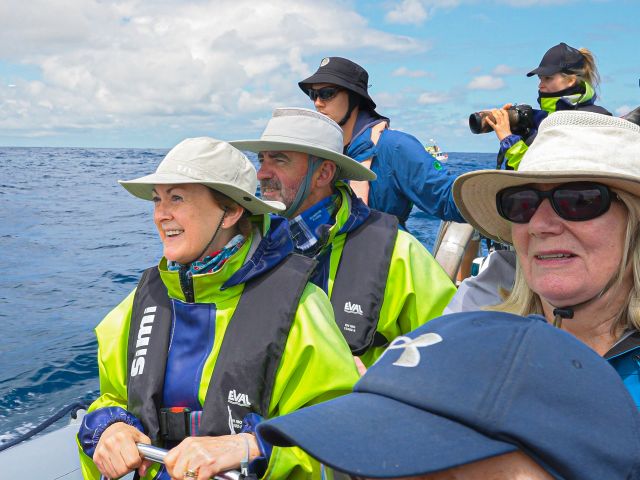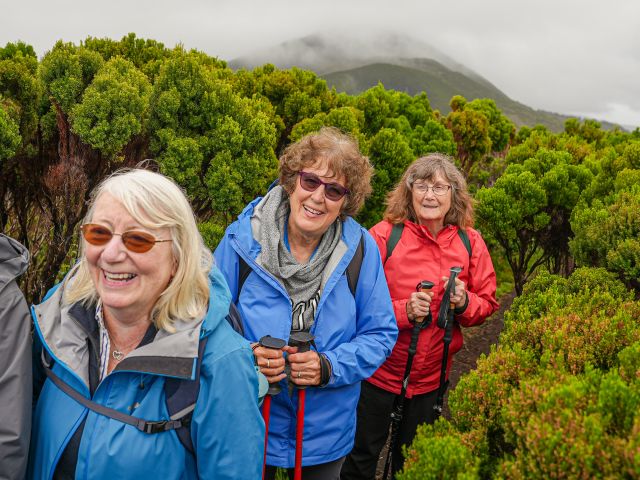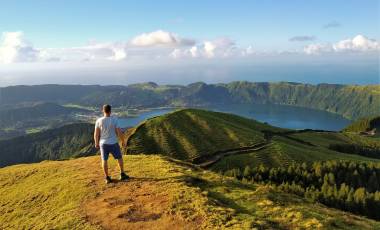Visiting the Azores was honestly unforgettable. The scenery was next-level — black volcanic ash, vibrant green forests, and bright hydrangeas everywhere in July. We saw so many whales and dolphins, all really close to shore because the sea gets so deep so quickly – it’s one of the best places in the world for year-round sightings. And hopping between the islands (they’re only about an hour apart by ferry!) felt like discovering hidden pockets of history — each one had its own personality. We even saw a pod of whales during one of the crossings!
Walking in the Azores

Azores Adventure









